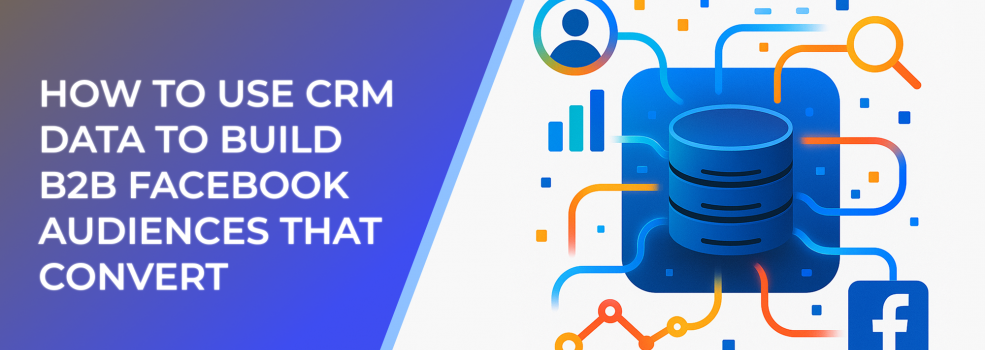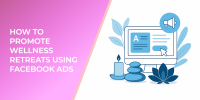Customer Relationship Management (CRM) systems store valuable insights about your leads and clients. From firmographics like industry and company size to engagement data such as email interactions and purchase history, CRM data is a goldmine for creating targeted Facebook audiences. According to HubSpot, companies that effectively use CRM data see a 29% increase in sales and a 34% boost in sales productivity.
For B2B businesses, where the sales cycle is often longer and more complex, tapping into CRM insights allows you to target decision-makers more effectively and personalize ad campaigns.
Step 1: Sync CRM Data With Facebook Ads Manager
Visualizing how CRM data centralizes customer insights to power targeted B2B Facebook audiences
The first step is connecting your CRM system with Facebook Ads Manager. Many platforms, like Salesforce and HubSpot, offer native integrations. Alternatively, you can upload a CSV file of customer and lead information directly. Key data points include:
-
Work email addresses
-
Job titles
-
Industry type
-
Company size
This structured approach ensures your ads reach the right people instead of wasting budget on irrelevant clicks.
Step 2: Build Custom Audiences From CRM Data
Once your data is synced, create Custom Audiences in Facebook. Examples of high-performing B2B custom audiences include:
-
Past leads who opened emails but never booked a demo.
-
Decision-makers at companies that downloaded whitepapers or case studies.
-
Existing clients who can be cross-sold or upsold.
Custom audiences built from CRM data typically outperform broad targeting. In fact, Facebook reports that lookalike and CRM-based targeting can reduce acquisition costs by up to 50% compared to general demographic targeting.
Step 3: Create Lookalike Audiences
Facebook advertising funnel: powering each stage with CRM-powered custom and lookalike audiences
After building your Custom Audiences, you can expand reach with Lookalike Audiences. Facebook analyzes your CRM-based audience and finds similar users who share firmographic and behavioral traits. This is particularly effective for B2B lead generation campaigns where you want to target new but relevant prospects.
For example, if your CRM data shows your best clients are mid-sized SaaS companies, a lookalike audience will help you reach other SaaS businesses with similar buying behaviors.
Step 4: Segment Audiences for Funnel Stages
CRM data is invaluable for segmenting your Facebook audiences based on where they are in the sales funnel:
-
Top of Funnel (Awareness): Leads who visited your website but haven’t engaged deeply.
-
Middle of Funnel (Consideration): Prospects who attended a webinar or downloaded an eBook.
-
Bottom of Funnel (Conversion): Leads in your CRM who have been in touch with sales but haven’t closed.
This segmentation ensures you deliver the right message at the right stage. For example, awareness audiences may see thought-leadership content, while conversion-stage audiences may see case studies or limited-time offers.
Step 5: Use Dynamic Content and Retargeting
Pairing CRM data with Facebook’s dynamic ad features allows you to show highly relevant ads. For instance, if a prospect engaged with a specific service page on your website, you can retarget them with content directly related to that service. Dynamic retargeting can increase conversion rates by up to 300% compared to generic ads.
Step 6: Measure, Refine, and Optimize
Your CRM doesn’t just help you build audiences—it also helps measure campaign impact. Sync conversions back into your CRM to analyze ROI and lead quality. Use these insights to refine your audiences continuously. Testing different CRM segments and ad creatives ensures you consistently optimize for lower cost per acquisition (CPA) and higher return on ad spend (ROAS).
Final Thoughts
B2B Facebook advertising becomes significantly more powerful when paired with CRM data. By using custom and lookalike audiences, segmenting based on funnel stages, and leveraging dynamic retargeting, you can create campaigns that drive not just clicks, but meaningful conversions. Remember: the quality of your data determines the quality of your results.
Suggested Reading From LeadEnforce

